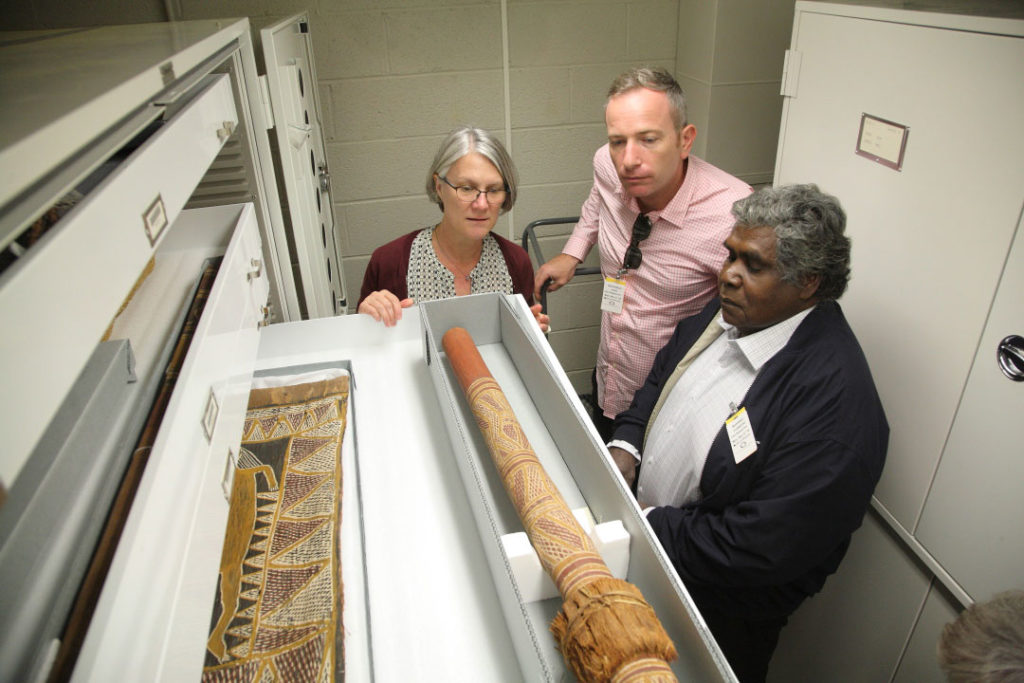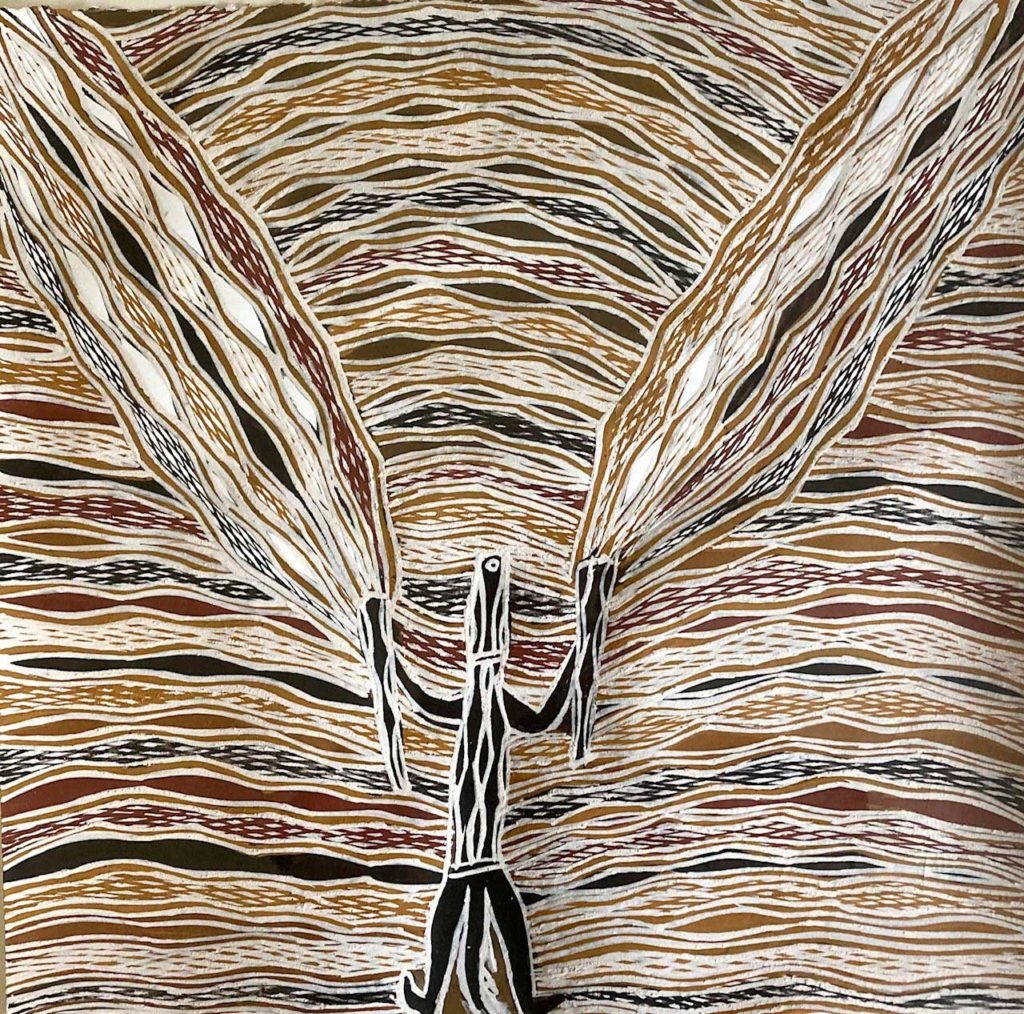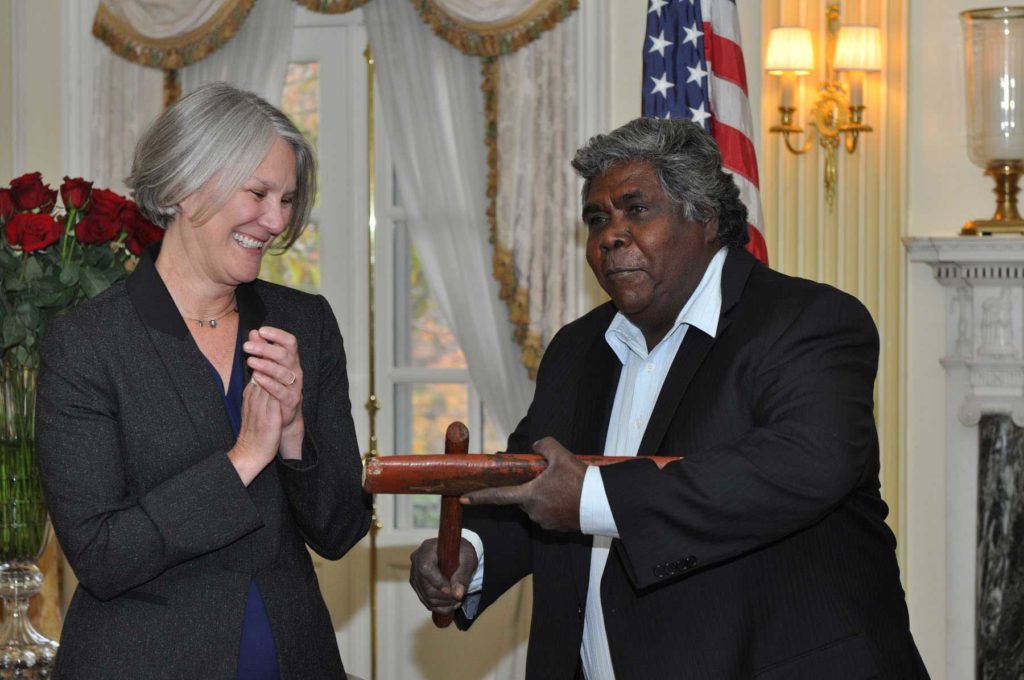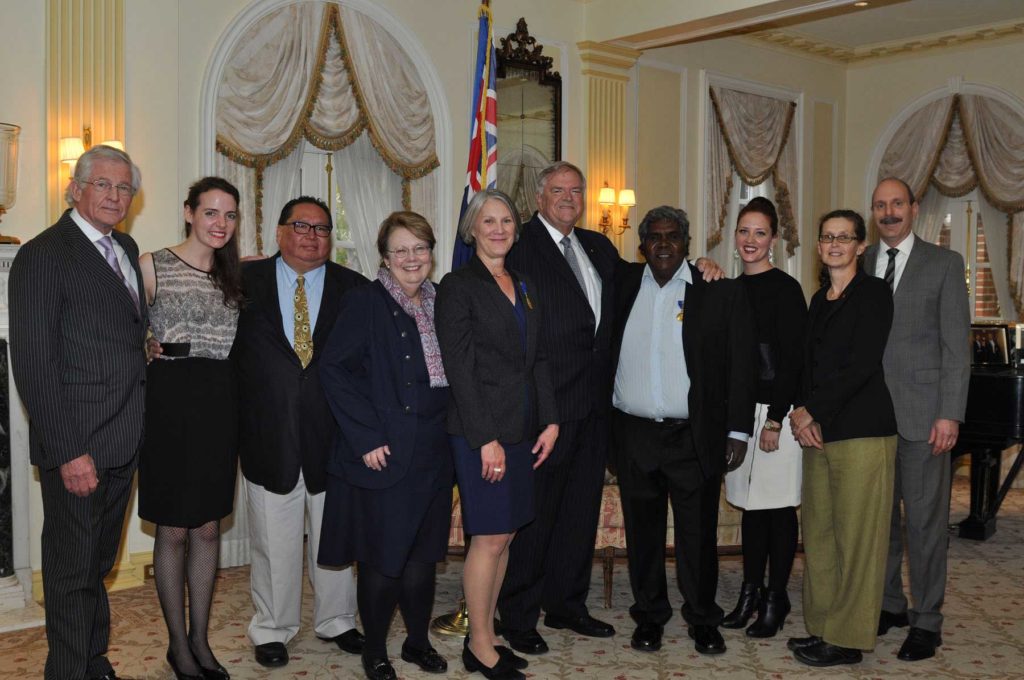When Ambassador Kim Beazley contacted me in 2015 to plan my induction as an honorary Member of the Order of Australia, I realized that by waiting a few months, Djambawa Marawili AM could attend the ceremony. Djambawa was coming to Kluge-Ruhe to undertake an artist residency in November that year. Everything fell into place and we planned a trip to Washington DC as part of Djambawa’s residency. This enabled us to also see the Yolŋu collections at the Smithsonian National Museum of Natural History and visit the National Museum of the American Indian.

It was during this residency that Djambawa came up with the idea for the Maḏayin exhibition. He said, “I came to America and found my maḏayin (in the museum collections at Kluge-Ruhe and NMNH) and I want to share it with the world.”

The ceremony took place on November 2nd at Ambassador Beazley’s residence. Kluge-Ruhe staff, Advisory Council members, University of Virginia administrators including President Teresa Sullivan, and my family were all present. The investiture involved a formal presentation by the four branches of the Australian military and the Ambassador. But the highlight for me was the ceremony Djambawa conducted with bilma (clapsticks) and manikay (song). He later told me the song was intended to make me a strong leader and enable me to carry forward with the important work of Kluge-Ruhe.

After we returned to Charlottesville, Djambawa presented me with a painting he had been working on secretly during evenings in the Kluge-Ruhe guest cottage. It is a 16 x 16 inch painting in natural ochres on paper depicting Barü, the ancestral crocodile, holding two clapsticks pointing upward. Djambawa’s distinctive Madarrpa clan design emanates from the bilma. When he presented the painting to me, Djambawa explained that Barü was him and the clan design represented his song. “This is me singing for you at your ceremony.” I was speechless. The ceremony is still one of the most memorable occasions of my life and Djambawa’s rendering of it is my most valued possession.

In producing Maḏayin in collaboration with Yolŋu artists and knowledge holders, we intend to realize Djambawa’s vision. This project, with its touring schedule and budget, is Kluge-Ruhe’s most ambitious undertaking to date. Although I have sometimes felt overwhelmed by the responsibility it entails, I have also felt empowered by Djambawa’s song. And we have been fortunate that doors have opened and friends have appeared as if on schedule to keep us moving forward.